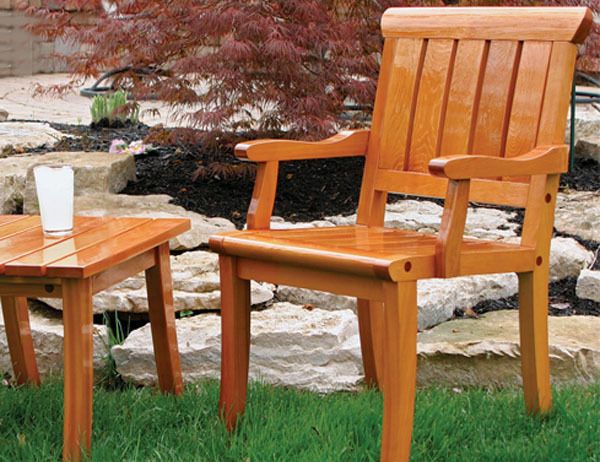A Durable Exterior Finish
Epoxy sealer and marine varnish protect wood against the weather
Synopsis: On any piece of wood exposed to the elements, whether it is your front door or the patio furniture, a durable finish is crucial. Sean Clarke swears by a two-step process using a primer and a varnish topcoat developed in the boat business, where they know all about protecting wood from water and weather. The primer he uses, Smith & Company’s MultiWoodPrime (also called Clear Penetrating Epoxy Sealer), is a two-part resin epoxy that penetrates the wood, making it resistant to fungi and water damage. It also chemically bonds to the Epifanes varnish, which has ultraviolet (UV) inhibitors to protect the wood for years to come.
On any piece of wood exposed to the elements, whether it is your front door or the patio furniture, a durable finish is of utmost importance. For maximum protection, I use a two-step process that greatly improves the resilience of my exterior finishes. It consists of a primer and a varnish topcoat used in the boat business, where they know all about protecting wood from the elements. The primer is a two-part resin epoxy that impregnates the wood, making it resistant to fungi and water damage. It also chemically bonds to the varnish, which has ultraviolet (UV) inhibitors to protect the wood and the primer.
Prep the wood and apply the primer
Sand all of the surfaces with P220-grit sandpaper, removing the dust with a vacuum, compressed air, or a tack cloth. If desired, brush, spray, or wipe on a pigment-based oil stain, but avoid dyes because they will fade faster when used outdoors. Let the stain dry for 12 to 24 hours.
For several years, I’ve had great results using MultiWoodPrime (also called Clear Penetrating Epoxy Sealer) made by Smith & Company. Originally developed to stabilize decaying outdoor wood structures, it comes in a cold-weather formula for when the temperature is 28° to 65ºF, and a warm-weather version for above 50ºF. Both consist of two parts combined equally, with a working time of about 20 minutes.
Use a synthetic-bristle brush to apply the thin liquid generously, allowing it to soak into the wood. Re-apply to drier areas. The idea is to thoroughly saturate the fibers until all the porosity of the wood has been eliminated, so pay particular attention to joints and to end grain on legs and arms. When the surface will not absorb any more epoxy, wipe off the excess with a rag soaked in lacquer thinner. Let this coat dry for 24 to 48 hours.
Following the cure time, if the surface feels rough, gently scuff it with P320-grit no-load sandpaper. Try not to sand through to the bare wood on edges and corners.
From Fine Woodworking #179
For the full article, download the PDF below:
Fine Woodworking Recommended Products

Bumblechutes Bee’Nooba Wax

Osmo Polyx-Oil

Odie's Oil























Log in or create an account to post a comment.
Sign up Log in